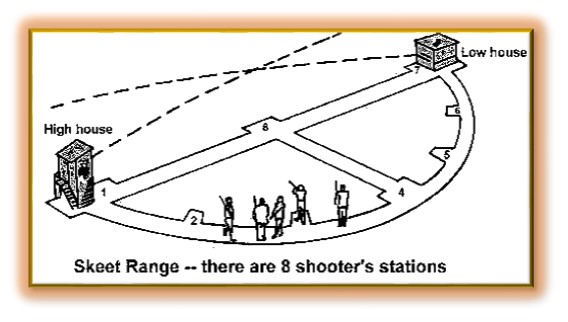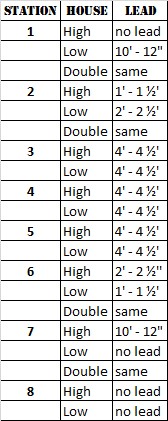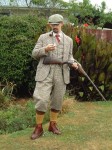 EVERY SUNDAY 10AM START – LAST SIGNUPS BY 2PM
EVERY SUNDAY 10AM START – LAST SIGNUPS BY 2PM
A round of skeet consists of 25 shots taken from 8 different shooting stations. Unlike trap shooting the target flight paths do not vary. The shooters however move about an arc which creates different angles and leads. Since everyone shoots differently the leads listed here are recommended starting points only.
The 8 stage course of fire adds up to 24 rounds. The 25th shot is taken either after the first miss at a station or after the last low house from station 8. With your first perfect 25 score you will receive one of our club pins (see our Shooter Achievement page).
The choice of firearms here are typically double barrelled over/under shotguns with 26″ – 30″ inch barrels and very open chokes. Many of our shooters also use a sporting clays gun or a field gun. You will see just as many semi-auto and pump action shotguns on our ranges as you will see over/unders. While most use 12 gauge shotguns; for a tougher challenge lots of our shooters hone their skills with 20 ga., 28 ga. and even 410 cal. guns. No matter the gauge, our range (as well as most others) is limited to 2 ¾ shell length and #7 ½ or smaller shot pellets.
Skeet is an excellent venue for teaching lead and follow through. During WWII the US military had their air gunners practice by skeet shooting. “Leading the Target” and “Follow through” are important for any of the shotguns sports. Because of the different presentations of targets a skeet shooter should know and be able to use all four. There are four types of Lead:
1. Snap Shoot: point your gun at the spot where you know the bird will go, wait until the target arrives, and fire. The gun does not swing at all. Perfect timing is absolutely necessary.
2.Swing Thru: start with muzzle behind target, swing through it and ahead in one fluid motion. Pull trigger when the lead is correct and don’t stop the swing of the muzzle.
3. Pull Away: start with his muzzle on the moving target, hold for a moment to get the correct target speed, then accelerate muzzle until lead is correct and fire. Continue with follow through.
4. Sustained Lead: aim the muzzle in front of the bird at the correct lead, maintains that lead for a heartbeat to make sure that it is correct, and fires. Continue with follow through.
Follow Through: after pulling the trigger, continue to track the target with the muzzle for some time. This will prevent the shooter from stopping the muzzle and shooting behind the moving target.

